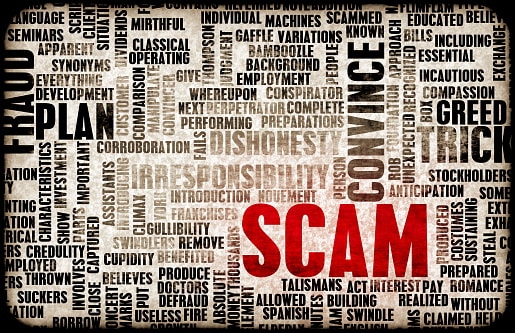By Thomas Hart
In today’s world, scams abound; according to a report by CNBC, Americans lost $16B in 2016 due to fraud and scams and new and small businesses are no exception to the people who make money scamming others out of theirs. Within weeks of launching his website, and opening the doors of his design shop to the public, Thomas Hart, owner of Hart & Hive, experienced his first scam attempt and wants to warn other small business owners they need to stay vigilant to avoid being a victim. There has been a concerted effort to protect consumers from scams, yet small businesses can be looked upon as easy targets because they have less experience or dedicated resources to spot and fight scams.
In our personal lives, we may be more cautious against emails and offers that seem just too good to be true, yet it can be easy for small business owners to fall prey to the temptation of a sale. Scams generally come in the form of a prospective sale and as a new business owner you are keen to make any sale you can and also don’t want to ignore or upset what could be a potentially legitimate customer, therefore you tend to go further into the scam then you may otherwise. Thomas’ physical shop also has an online store where most of the scams he’s faced have originated. Commonly an email comes in inquiring about the purchase of several items, asking if he accepts credit cards and the cost to ship internationally. When a response states orders through the website can be paid for with credit cards and shipping is automatically calculated there, there is an insistence the transaction be made outside of the web store and this can often be a sign their payment method is not going to be legitimate.
Thomas says to check the email address carefully, and not to rely simply on the name that appears in the “Sent From” field, which a sender can make say anything, click to expand the email and read the full address. This will often give you a clue to its legitimacy. You also need to think if it really makes sense that this buyer would purchase from you. Is there really no one in their own country they could buy the products from for cheaper? Why are you the one they want to purchase from?
“About two months in, I got an email requesting to purchase a gold necklace”, says Thomas, “after sending photos of what we had to offer, to my surprise he picked four he liked and asked for two of each of them then requested if I had any gold bracelets. When I asked what style he was seeking, his response was ‘anything gold’, which raised a red flag for me. How could he not care what his jewellery looked like? The prospect of what would have been a $4000 order kept me hoping this was for real, but when he said he wanted the items shipped directly to his “son” in the US, another red flag was raised. Also, he only wanted to communicate through email or text message and when I tried to call the number; it was revealed he was using an Internet based texting service, not an actual phone. Once I was given a credit card number to process the transaction, I immediately called the issuing bank and it turned out he was using a stolen card. To my surprise, I was told I could have been held liable for the money anyway if I had not been sufficiently prudent in my attempt to spot the scam.”
Starting a new business is already stressful and financially taxing, having a bombardment of scam attempts come at you right at the start is the last thing you need and something you might not be able to afford to recover from. Thomas wants others to know what they can do to avoid being the victims of a scam and has listed his top ten red flags to look out for. While not all of these indicate a definite scam in progress, they should raise your level of caution.
- Customers who only want to communicate via email.
- Customers who claim to be in an unreasonable rush to have you ship the items to them.
- Email addresses that seem overly lengthy and appear to be random words, letters or symbols or that don’t match where the buyer claims to work or live.
- Customers who insist on making payments outside of the official methods you generally offer.
- Customers who want to purchase items from you they very easily could buy closer to where they claim to live.
- Orders that are to be shipped to an address in a different province, state or country then the credit cards billing address.
- Customers who show little concern for the details of a high-value product.
- Customers who are unaware of their credit cards daily or monthly limit.
- Customers who don’t care to see expensive items in person before purchasing them.
- Customers who make no inquiry into the refund policy of high value items being shipped to them.
Thomas also urges business owners to confirm the payment has been fully processed before shipping items, and to call the issuing bank or credit card company to verify the customer’s details should they have any concerns about the legitimacy of the transaction. Don’t get caught up in the excitement of a big sale and forget to think if everything that is happening really makes sense.
Thomas Hart is an Industrial Designer and entrepreneur who is currently operating his second small business, a design studio and store called Hart & Hive.







